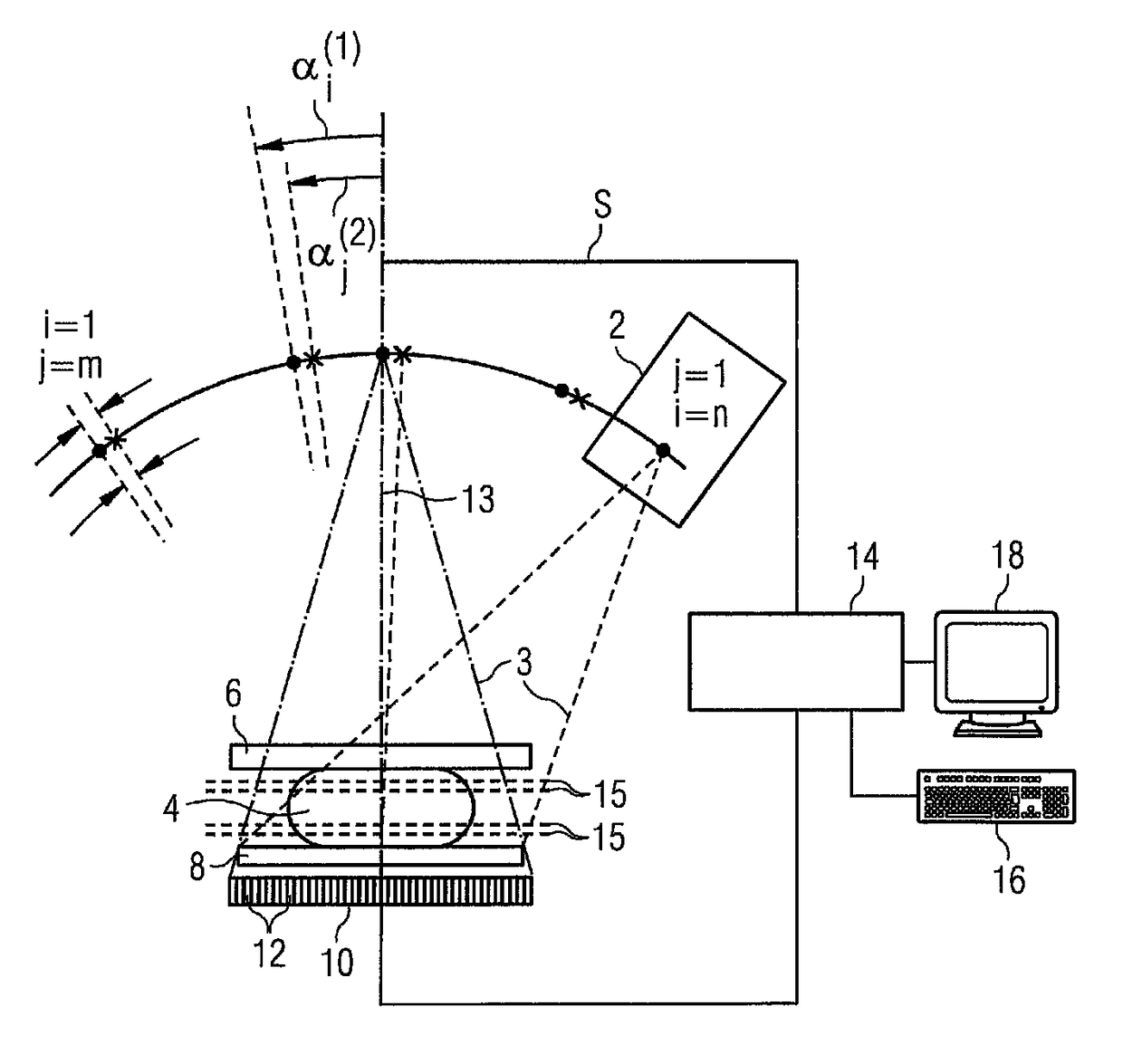Mammography method and apparatus to generate an X-ray tomosynthesis image of a breast of a patient
a tomosynthesis image and breast technology, applied in the direction of patient positioning for diagnostics, instruments, applications, etc., can solve the problems of inability to reliably produce the aforementioned composite image, the projection angle of the first tomosynthesis scan deviating slightly, and the patient's dose exposure is reduced, so as to achieve the effect of reducing the dose exposure of the patient and reducing the quality of the diagnosis
- Summary
- Abstract
- Description
- Claims
- Application Information
AI Technical Summary
Benefits of technology
Problems solved by technology
Method used
Image
Examples
Embodiment Construction
[0020]As shown in FIG. 1, the mammography apparatus has an x-ray tube 2 to generate x-rays 3 that traverse the breast 4 of a patient that is embedded between a compression plate 6 and a support plate 8. The x-rays 3 traversing the breast 4, the compression plate 6 and the support plate 8 are received by a large-area digital x-ray detector 10 that is made up of a plurality of individual detectors 12 arranged in a matrix-like array. The x-ray source 2 can move into different first and second angle positions i=1 through n and j=1 through m—in the example it is pivoted—so that first and second projection images p(1)i, p(2)j of the examination subject 4 can be generated with different first and second projection angles α(1)i, α(2)j relative to the normal 13 of the support plate 8 of the x-ray detector 10. In FIG. 1, the angle positions of the foci from which the x-rays 3 emanate are respectively drawn for different projection angles.
[0021]In the first angle positions i, the x-ray tube 2 ...
PUM
 Login to View More
Login to View More Abstract
Description
Claims
Application Information
 Login to View More
Login to View More - R&D
- Intellectual Property
- Life Sciences
- Materials
- Tech Scout
- Unparalleled Data Quality
- Higher Quality Content
- 60% Fewer Hallucinations
Browse by: Latest US Patents, China's latest patents, Technical Efficacy Thesaurus, Application Domain, Technology Topic, Popular Technical Reports.
© 2025 PatSnap. All rights reserved.Legal|Privacy policy|Modern Slavery Act Transparency Statement|Sitemap|About US| Contact US: help@patsnap.com



